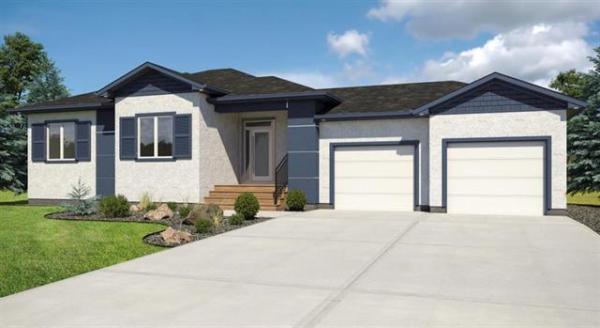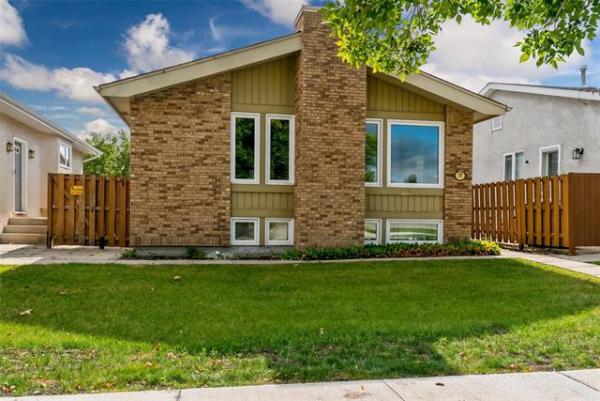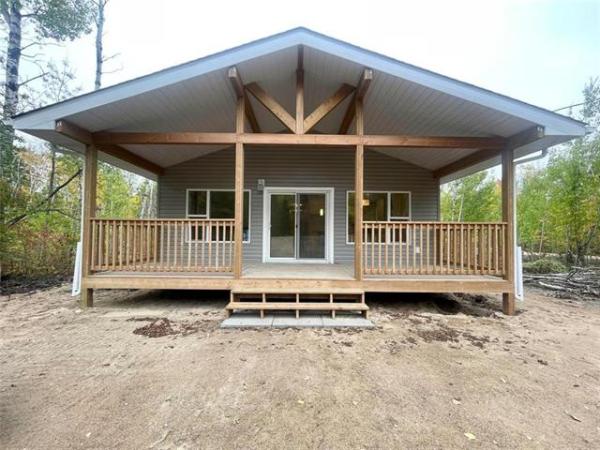QUESTION: I live in a 100-year-old house in Wolseley. My neighbour's house to the south is approximately four feet away. I put a slab sidewalk down many years ago because no sun ever shines between the houses and it was always very muddy. I get a fair bit of water seepage on that wall of my basement. How would I grade two feet of property and still be able to access and store things between the houses?
Thank you, Janice Pennington
ANSWER: This is a perfect time of year to address this issue as the snow is gone and the ground is thawing, making it the ideal season to plan for grading and landscaping projects. Almost all homes need some attention to grading, some easily rectified with a little soil and seed and others, like your house, more difficult to address.
I have seen hundreds of older homes with the same issue as yours, some with major seepage and others with more minor water issues. Because you have a stone foundation, the real cause of the water intrusion lies beneath the surface. As older stone foundations age, the mortar holding the individual components together will deteriorate. As this occurs, water from the soil outside the house will force its way through the mortar joints by hydrostatic pressure.
Minimizing the soil moisture, as you are correctly attempting, will help prevent a wet basement but may not be a final solution. Excavating outside the foundation and repairing and waterproofing the stone walls may be the only way to properly stop the leakage.
Because it can be very messy and expensive to dig up your foundation for proper foundation repairs, there may be a few easier things you can do to help prevent excessive seepage. While grading will be quite difficult due to the lack of space between you and your neighbour, it is still worth doing. This should be done in conjunction with your neighbour, as raising the grade along one home without the other may create additional problems for the adjacent basement.
The one major adjustment you will have to make is thinking of this area as suitable for storage space. While you may have limited room in your yard, typical of Wolseley homes, you must not plan to store anything in this small area. Keeping anything along the side of the foundation will prevent adequate drying of the soil and make your problem worse.
The ideal material to have on the outside of a foundation in our area is topsoil and grass. This soil should be sloped away from the home enough to promote good drainage, which will prevent excessive puddling and allow the surface soil to quickly dry after precipitation.
While it may be very difficult for you to grow grass in such a narrow area where the sun likely doesn't reach, special grass seed designed for shady areas may work.
If grass is simply not possible, a good base of packed clay covered with landscape fabric and crushed limestone or river stone often works well. The loose stone cover will certainly allow easier drying than the current concrete slabs. All types of concrete or other paving material should be avoided as they will trap moisture in the soil and hinder further grading efforts.
Accessing the area to mow and maintain the grass without damaging it may be tricky, which is why a stone covering may be a better choice. It will also allow a reasonable base for pedestrian traffic while maintaining proper grading.
Owning a "century home" with an old stone foundation may offer unequalled character, but also has its challenges. One thing to always keep in mind is that the basement of a home like yours was never designed to be part of the living space. It was actually conceived to be a cellar that would partially house the plumbing, heating, mechanical and electrical systems.
Most of these homes have the floor joists quite low, offering only enough headroom to properly service the items in the basement. If a little water leaked through the foundation, the floor was purposely sloped toward the floor drain, which allowed reasonable drainage and drying potential. Finishing the interior of the foundation or basement in these old homes always presents challenges, unless the outside of the foundation has been waterproofed and other modern modifications are undertaken. The exterior of the foundation should also be viewed with this mindset.
The outside of a stone foundation above grade should always be left open and exposed to allow frequent repointing and repairs to deteriorated mortar. This will help prevent separation of the stones and structural movement. Building up the soil adjacent to this area will also help minimize moisture issues, but may be difficult and should be done moderately.
Other items that need attention are the eavestroughs and downspouts for the roof above this area. The gutters must be large enough to prevent overflowing, cleared of leaves and debris regularly, and the downspouts directed as far away as possible from the foundation and the area between the homes. Installing downspout extensions that are two to three metres long, directed to the front and rear yards, may make the largest contribution to a dry basement.
The main thing to keep in mind when trying to improve grading and other items to prevent basement seepage is that anything that gets in the way of quick drying of the soil outside the foundation should be avoided. Combining that with efforts to move precipitation as far away from the foundation as possible, with good downspouts and eavestroughs, will ensure that the minimum amount of water is seen inside your basement.
Ari Marantz is the owner of Trained Eye Home Inspection Ltd. and the president of the Canadian Association of Home & Property Inspectors-Manitoba (www.cahpi.mb.ca). Questions can be e-mailed to the address below. Ari can be reached at (204) 291-5358 or check out his website at www.trainedeye.ca.
trainedeye@iname.com




